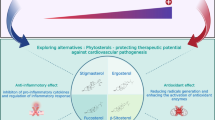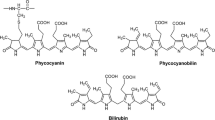Abstract
While propolis is known to have abundant bioactive constituents and a variety of biological activities, it is not clear whether propolis has beneficial effects on high glucose-mediated vascular endothelial impairment. The aim of the present study was to investigate the potential protective effect of propolis extract against the acute vascular endothelial dysfunction resulting from exposure to high glucose load and to elucidate its underlying mechanism. Rat aortic rings were incubated with normal glucose (11 mM), high glucose (44 mM), or mannitol (44 mM) for 3 h with or without propolis extract (400 μg/ml). Contraction to phenylephrine (Phe, 10−9–10−5 M) and relaxation to acetylcholine (ACh, 10−9–10−5 M) and sodium nitroprusside (SNP, 10−9–10−5 M) were measured before and after incubation. Changes in malondialdehyde (MDA), reduced glutathione (GSH), and superoxide dismutase (SOD) were also measured. Phe-induced contraction was impaired by high glucose as the E max decreased from 138.87 ± 11.43 to 103.65 ± 11.5 %. In addition, ACh-induced relaxation was impaired as the E max decreased from 99.80 ± 7.25 to 39.20 ± 6.5 %. SNP-induced relaxation was not affected. Furthermore, high glucose decreased the levels of both SOD (by 6 U/ml) and GSH (by 68 %) and increased levels of MDA (by 85 %). Propolis extract prevented high glucose-induced impairment of Phe and ACh responses and increased both SOD and GSH, leading to decreased MDA levels. In conclusion, propolis can protect against high glucose-induced vascular dysfunction by reducing oxidative stress.



Similar content being viewed by others
References
Agarwal G, Vemanaradhya GG, Mehta DS (2012) Evaluation of chemical composition and efficacy of Chinese propolis extract on Porphyromonas gingivalis and Aggregatibacter actinomycetemcomitans: an in vitro study. Contemp Clin Dent 3:256–261
Ahmad M, Turkseven S, Mingone CJ, Gupte SA, Wolin MS, Abraham NG (2005) Heme oxygenase-1 gene expression increases vascular relaxation and decreases inducible nitric oxide synthase in diabetic rats. Cell Mol Biol (Noisy-le-grand) 51:371–376
Bankova V (2005) Recent trends and important developments in propolis research. Evid Based Complement Alternat Med 2:29–32
Banskota AH, Nagaoka T, Sumioka LY, Tezuka Y, Awale S, Midorikawa K, Matsushige K, Kadota S (2002) Antiproliferative activity of the Netherlands propolis and its active principles in cancer cell lines. J Ethnopharmacol 80:67–73
Banskota AH, Tezuka Y, Kadota S (2001) Recent progress in pharmacological research of propolis. Phytother Res 15:561–571
Blonska M, Bronikowska J, Pietsz G, Czuba ZP, Scheller S, Krol W (2004) Effects of ethanol extract of propolis (EEP) and its flavones on inducible gene expression in J774A.1 macrophages. J Ethnopharmacol 91:25–30
Brownlee M (2001) Biochemistry and molecular cell biology of diabetic complications. Nature 414:813–820
Burdock GA (1998) Review of the biological properties and toxicity of bee propolis (propolis). Food Chem Toxicol 36:347–363
Capellini VK, Celotto AC, Baldo CF, Olivon VC, Viaro F, Rodrigues AJ, Evora PR (2010) Diabetes and vascular disease: basic concepts of nitric oxide physiology, endothelial dysfunction, oxidative stress and therapeutic possibilities. Curr Vasc Pharmacol 8:526–544
Cohen G, Riahi Y, Alpert E, Gruzman A, Sasson S (2007) The roles of hyperglycaemia and oxidative stress in the rise and collapse of the natural protective mechanism against vascular endothelial cell dysfunction in diabetes. Arch Physiol Biochem 113:259–267
De Vriese AS, Verbeuren TJ, Van de Voorde J, Lameire NH, Vanhoutte PM (2000) Endothelial dysfunction in diabetes. Br J Pharmacol 130:963–974
Ellman GL (1959) Tissue sulfhydryl groups. Arch Biochem Biophys 82:70–77
Friesen NT, Buchau AS, Schott-Ohly P, Lgssiar A, Gleichmann H (2004) Generation of hydrogen peroxide and failure of antioxidative responses in pancreatic islets of male C57BL/6 mice are associated with diabetes induced by multiple low doses of streptozotocin. Diabetologia 47:676–685
Fuliang HU, Hepburn HR, Xuan H, Chen M, Daya S, Radloff SE (2005) Effects of propolis on blood glucose, blood lipid and free radicals in rats with diabetes mellitus. Pharmacol Res 51:147–152
Guo X, Liu WL, Chen LW, Guo ZG (2000) High glucose impairs endothelium-dependent relaxation in rabbit aorta. Acta Pharmacol Sin 21:169–173
Isla MI, Nieva Moreno MI, Sampietro AR, Vattuone MA (2001) Antioxidant activity of Argentine propolis extracts. J Ethnopharmacol 76:165–170
Izuta H, Shimazawa M, Tsuruma K, Araki Y, Mishima S, Hara H (2009) Bee products prevent VEGF-induced angiogenesis in human umbilical vein endothelial cells. BMC Complement Alternat Med 9:45
Jasprica I, Mornar A, Debeljak Ž et al (2007) In vivo study of propolis supplementation effects on antioxidative status and red blood cells. J Ethnopharmacol 110:548–554
Kolankaya D, Selmanoǧlu G, Sorkun K, Salih B (2002) Protective effects of Turkish propolis on alcohol-induced serum lipid changes and liver injury in male rats. Food Chem 78:213–217
Li DY, Yang BC, Mehta JL (1998) Ox-LDL induces apoptosis in human coronary artery endothelial cells: role of PKC, PTK, bcl-2, and Fas. Am J Physiol 275:H568–H576
Majithiya JB, Balaraman R (2005) Time-dependent changes in antioxidant enzymes and vascular reactivity of aorta in streptozotocin-induced diabetic rats treated with curcumin. J Cardiovasc Pharmacol 46:697–705
Melendez-Ramirez LY, Richards RJ, Cefalu WT (2010) Complications of type 1 diabetes. Endocrinol Metab Clin N Am 39:625–640
Miike T, Kunishiro K, Kanda M, Azukizawa S, Kurahashi K, Shirahase H (2008) Impairment of endothelium-dependent ACh-induced relaxation in aorta of diabetic db/db mice—possible dysfunction of receptor and/or receptor-G protein coupling. Naunyn Schmiedebergs Arch Pharmacol 377:401–410
Miyataka H, Nishiki M, Matsumoto H, Fujimoto T, Matsuka M, Satoh T (1997) Evaluation of propolis. I. Evaluation of Brazilian and Chinese propolis by enzymatic and physico-chemical methods. Biol Pharm Bull 20:496–501
Najemnik C, Sinzinger H, Kritz H (1999) Endothelial dysfunction, atherosclerosis and diabetes. Acta Med Austriaca 26:148–153
Ozcelikay AT, Tay A, Dincer D, Meral S, Yildizoglu-Ari N, Altan VM (1999) The effects of chronic l-arginine treatment on vascular responsiveness of streptozotocin-diabetic rats. Gen Pharmacol 33:299–306
Pieper GM (1999) Enhanced, unaltered and impaired nitric oxide-mediated endothelium-dependent relaxation in experimental diabetes mellitus: importance of disease duration. Diabetologia 42:204–213
Pieper GM, Langenstroer P, Siebeneich W (1997) Diabetic-induced endothelial dysfunction in rat aorta: role of hydroxyl radicals. Cardiovasc Res 34:145–156
Qian LB, Wang HP, Chen Y, Chen FX, Ma YY, Bruce IC, Xia Q (2010) Luteolin reduces high glucose-mediated impairment of endothelium-dependent relaxation in rat aorta by reducing oxidative stress. Pharmacol Res 61:281–287
Qian L, Wang H, Xia Q, Bruce I, Huang H (2005) Interleukin-2 improves vascular functions in streptozotocin-induced diabetic rats. Conf Proc IEEE Eng Med Biol Soc 3:2283–2286
Seo KW, Park M, Song YJ, Kim SJ, Yoon KR (2003) The protective effects of propolis on hepatic injury and its mechanism. Phytother Res 17:250–253
Son SM, Whalin MK, Harrison DG, Taylor WR, Griendling KK (2004) Oxidative stress and diabetic vascular complications. Curr Diabetes Rep 4:247–252
Song YS, Park EH, Hur GM, Ryu YS, Kim YM, Jin C (2002) Ethanol extract of propolis inhibits nitric oxide synthase gene expression and enzyme activity. J Ethnopharmacol 80:155–161
Trusheva B, Trunkova D, Bankova V (2007) Different extraction methods of biologically active components from propolis: a preliminary study. Chem Cent J 1:13
Wang SX, Xiong XM, Song T, Liu LY (2005) Protective effects of cariporide on endothelial dysfunction induced by high glucose. Acta Pharmacol Sin 26:329–333
Zhao JQ, Wen YF, Bhadauria M et al (2009) Protective effects of propolis on inorganic mercury induced oxidative stress in mice. Indian J Exp Biol 47:264–269
Conflict of interest
The authors state no conflict of interest.
Author information
Authors and Affiliations
Corresponding author
Rights and permissions
About this article
Cite this article
El-Awady, M.S., El-Agamy, D.S., Suddek, G.M. et al. Propolis protects against high glucose-induced vascular endothelial dysfunction in isolated rat aorta. J Physiol Biochem 70, 247–254 (2014). https://doi.org/10.1007/s13105-013-0299-7
Received:
Accepted:
Published:
Issue Date:
DOI: https://doi.org/10.1007/s13105-013-0299-7




